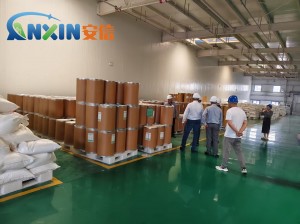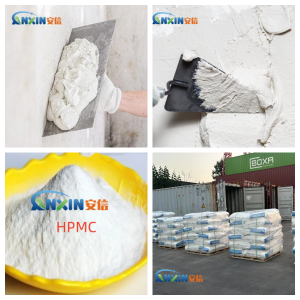Hydroxypropyl Methyl Cellulose (HPMC), a nonionic cellulose ether derivative, is widely used in building materials due to its excellent thickening, water retention, bonding, and film-forming properties. In particular, HPMC, as a key additive in gypsum-based materials, can significantly improve the workability and final quality of gypsum products, making it an indispensable chemical modifier in modern green buildings.
1. Characteristics and Challenges of Gypsum Materials
Gypsum is a traditional and environmentally friendly inorganic cementitious material with advantages such as rapid setting and hardening, low shrinkage, excellent decorative properties, and strong fire resistance. However, in practical applications, gypsum also presents the following challenges:
Insufficient water retention: Rapid water loss during application leads to uneven setting.
Limited adhesion: Poor adhesion, especially when combined with substrates or other materials.
Poor workability: Problems such as slumping, bleeding, and poor fluidity can occur.
Insufficient Durability: In certain environments, gypsum products exhibit poor strength retention.
Therefore, the addition of polymer additives such as HPMC can effectively address these pain points.
2. The Main Functions of HPMC in Gypsum Additives
2.1. Water Retention and Thickening
The hydrophilic groups in the HPMC molecular chain form hydrogen bonds with water molecules, improving the water retention of the gypsum slurry and preventing rapid evaporation or absorption by the base layer. This not only ensures sufficient hydration of the gypsum but also reduces cracking and powdering.
2.2. Improved Workability
HPMC imparts the gypsum slurry with appropriate viscosity and fluidity, making it easier to spread and smooth. It also maintains good thixotropy—flowing easily during application and remaining stable upon standing—thus improving construction efficiency.
2.3. Improved Adhesion
HPMC’s film-forming properties create a thin polymer film between the gypsum and the base, strengthening the adhesion of the gypsum to the wall or board, reducing the risk of sloughing.
2.4. Delaying Setting Time
Gypsum sets quickly, making it difficult to apply over large areas. HPMC can slow the crystallization of gypsum particles through molecular shielding, thereby extending the workable time and facilitating construction.
2.5. Improving Surface Quality
Gypsum products with HPMC have a smoother, finer surface, preventing bleeding, cracking, or powdering, enhancing the decorative effect and overall aesthetics.
3. Applications of HPMC in Various Gypsum Products
3.1. Gypsum Plaster Mortar
HPMC significantly improves the water retention and workability of mortar, making application smoother and reducing cracking and hollowing.
3.2. Gypsum Putty Powder
In putty systems, HPMC ensures smoothness and ductility during application, resulting in a smoother wall surface and facilitating subsequent painting.
3.3. Self-Leveling Gypsum Materials
Self-leveling gypsum requires excellent fluidity and stability. HPMC thickens the slurry to prevent settling while maintaining optimal flow properties, ensuring smoothness after application.
3.4. Adhesive Plaster
In the bonding of gypsum board or decorative panels, HPMC improves the adhesion of the slurry, preventing it from falling off, while also delaying the setting time and enhancing construction safety.
3.5. Forming Gypsum Products
In prefabricated products such as gypsum board and decorative plaster, HPMC improves forming properties and enhances the surface density and smoothness.
4. Summary of the Advantages of HPMC in Gypsum Applications
Excellent Application Performance: Significantly improved fluidity, water retention, and adhesion.
More Consistent Quality: Reduced cracking, bleeding, and powdering.
Increased Efficiency: Delayed setting time facilitates large-scale, continuous construction.
Environmentally Friendly and Safe: HPMC is a green and environmentally friendly material, harmless to humans and the environment.
5. Development Trends
With the increasing demand for energy conservation and environmental protection in buildings, the application scope of gypsum materials continues to expand, placing higher demands on the performance of additives. Future development trends for HPMC in gypsum systems include:
Combination with other polymer additives to achieve multifunctional synergistic effects;
Customization for different construction scenarios, such as specialized products like fast-setting and ultra-high water-retention types;
Green and sustainable development, optimizing production processes, and reducing energy consumption and emissions.
Hydroxypropyl methylcellulose (HPMC), as a key additive in gypsum-based materials, plays an irreplaceable role in improving construction performance, enhancing adhesion, delaying setting time, and optimizing surface quality. With the construction industry’s growing demand for high-performance, environmentally friendly materials, the application prospects of HPMC in gypsum additives will continue to expand.
Post time: Sep-06-2025








